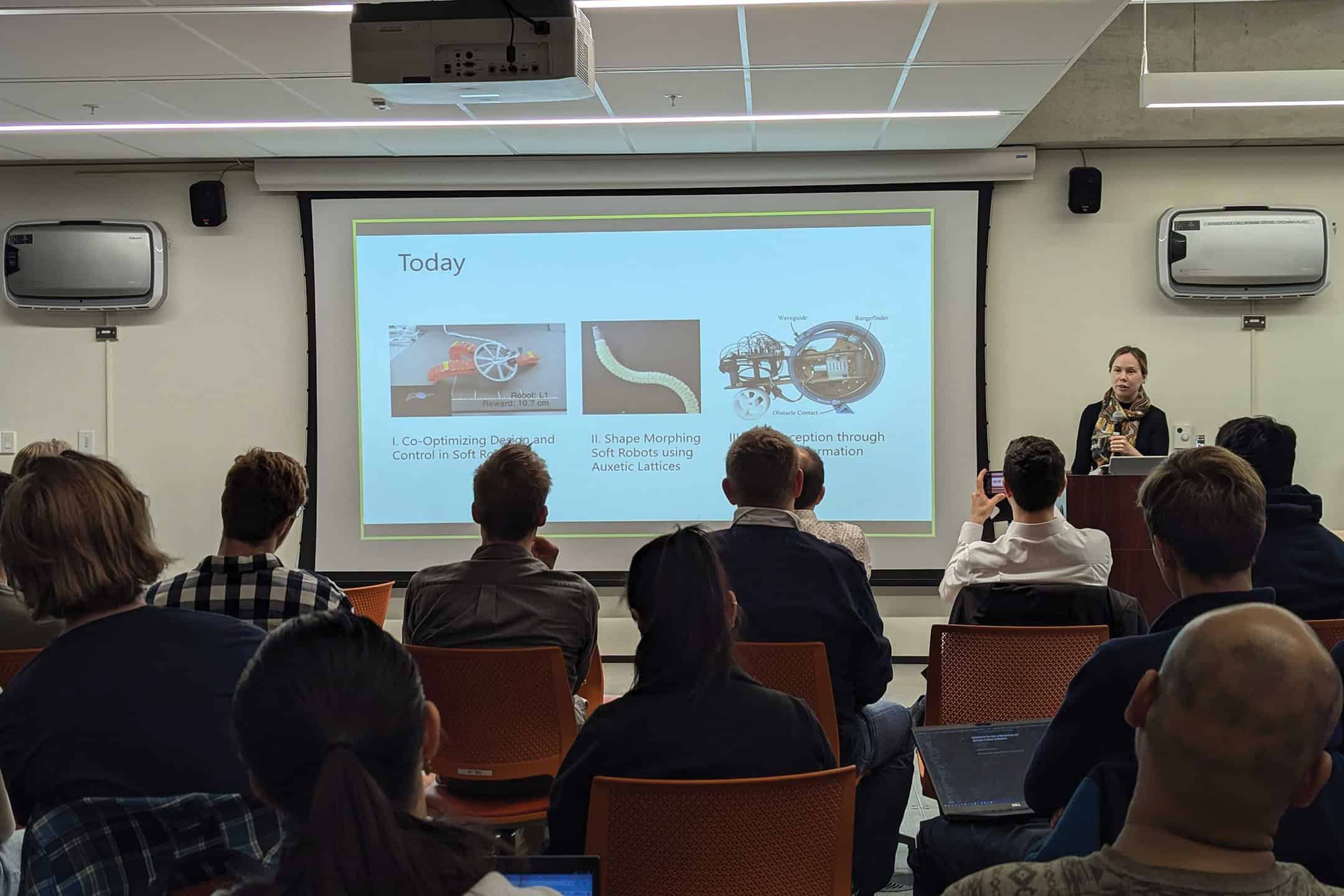By grasping objects with our fingers — mugs, pens, clothes, and much more — we are able to make inferences and deductions about that object based on our physical interaction with it. Now, imagine that your otherwise dexterous and sensitive fingers were replaced with flimsy hot dogs with no touch sensors. You’d struggle to hold and derive information about the countless objects we encounter in our daily lives.
In essence, the task of holding an object is dependent on your fingers as much as it is on your brain. The same is true of robots and their bodies, says Audrey Sedal, assistant professor of mechanical engineering at McGill University. On October 25, Sedal delivered a talk on robot morphology as part of the U of T Robotics Institute Seminar Series.
Testing morphology in walking bots
Sedal specializes in robotics, the field of technology that deals with the construction of robots or machines that replicate human ability or movement. Robotics creates varied products: robots that assemble cars, perform surgeries, paint, deliver food, and more. The ratio of robots to humans in the global manufacturing industry as of 2024 is one to 71. In her talk, Sedal noted the critical role of robot morphology — the study of how a robot’s physical structure impacts its performance — in making design decisions that are effective for the robot to reach its assigned goal. In her seminar talk, she notes how the “structure and the actual physical existence of the robot in its environment is equally important.” To exhibit how a robot’s structure and physical body influence its data collection and processing, Sedal and her team at McGill’s Department of Mechanical Engineering and the Centre for Intelligent Machines devised a sophisticated experiment.
In the experiment, Sedal and her team developed a framework to monitor the movement of several robots — each with separate designs — along a flattened cardboard box. As part of their investigation, they constructed some of the robots with auxetic materials — which are materials that increase in width when stretched — as opposed to growing more narrow. A notable example of an auxetic material would be human tendons.
Sedal attached the robots to pneumatic tethering tubes — typically used in soft robots — which provided input to a computer modelling program to assess what type of information the robots’ sensors acquired about the cardboard surface’s texture and durability. Sedal and her team then measured a variety of physical data that impacted the robot’s walking ability.
The researchers developed a machine learning algorithm, which then evaluated the robots’ movement. As each robot walked, the algorithm retained which behaviour produced successful results, refining the robots’ walking processes with each iteration. Then, Sedal graphed the results alongside the robots’ sensory data, which allowed her to visualize the relationship between each robot, the robot’s collected data, and its walking performance.
The importance of symmetry in robot design
Sedal and her team found that robots with an asymmetric design — three legs — performed better than those with a symmetric design — four legs — due to pivoting mechanisms inherent in the asymmetric robots’ structure. A pivoting mechanism is any device that aids in rotation, like a knee or a joint. For a robot, this refers to its metal joints that allow it to walk.
Different robot types performed better or worse according to their sensor input. Based on the robots’ design structure, the more asymmetrical robots gained more direct and concise information from its surroundings. Their three legs covered more of the cardboard surface, so they were able to incorporate more data into its walking program and, as a result, walked better than the symmetric robots.
When asked about what improvements could be made to the experiment, Sedal noted how the team might use other surface textures — like plastic or foam, which are easier to move on — to lessen the impact of friction on the data the robots gathered as they walked.
Sedal has offered critical insight into the future of morphological research and robotics in general. The development of robots that can gauge and assess their own movement as they walk is promising. Imagine robotics waiters that get increasingly faster and more efficient with each order or a robot that is able to walk, turn, and stop as smoothly as a human.
Sedal’s research is a positive step in the direction of human-like machines — an exciting future!



No comments to display.